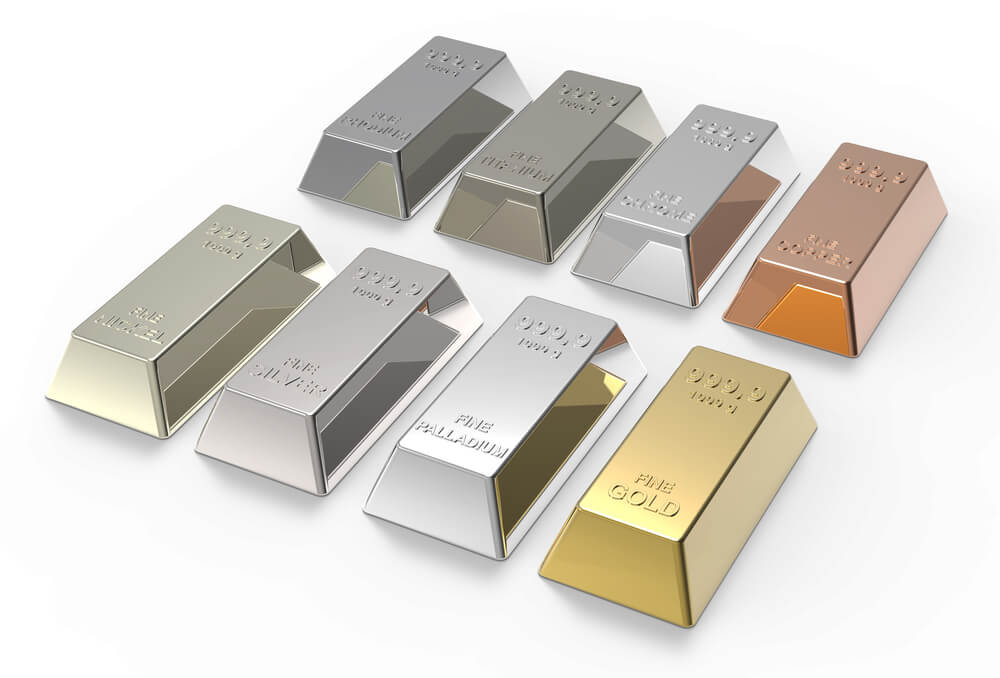
How Much Gold Should You Have in Your Portfolio?
Gold has a strong following. The love for gold is usually found among the masses or general public and not necessarily among traditional investors. Hardcore investors typically buy gold only as an afterthought. But because gold exhibits price stability when the stock market is galumphing, most investors keep some gold in their portfolio, just in case.
However, the big question is, “How much gold should I purchase?” Gold lends steadiness and diversity to any investment portfolio but going overboard could have a few side effects: poor growth, for instance.

If you want to invest in gold but are unsure how much, this article is tailor-written for you. In this piece, we shall discuss:
- The reasons you must invest in gold
- How much of your investments should be gold
- Buying gold in its physical or digital form and much more
Read this article to learn how to invest in gold and avoid some follies.
Table of Contents
Why Have Gold in Your Portfolio?
Before discussing the portfolio space to allocate to gold, let’s pore over the benefits of investing in gold.
Diversification
Gold investments provide some much-needed diversification to an otherwise populated portfolio with stocks and bonds. Having some gold in your kitty during an economic collapse or a stock market crash affords peace of mind since the yellow metal is quite detached from the mainstream financial market.
Inflation Hedge
Gold can be your hedge against inflation and a plummeting stock market as it functions independently of other asset classes.
Gold tends to move in the direction opposite to fiat currencies, such as the U.S. dollar. Paper money loses its purchasing power during inflation, but gold doesn’t since it has intrinsic value. Therefore, people flock to buy the yellow metal and safeguard their wealth.
Why is gold so valuable? Besides the various inherent characteristics that deem gold valuable, the fact that you can touch it lends it legitimacy. On the other hand, money-based transactions are mostly done using cards or wire transfers. Although you can see and feel paper money, it isn’t valuable by itself. If there’s no government backing, paper money is just that, paper. Gold’s value is not contingent on anything.
To learn more about why gold is so valuable, click the link.
Read more: Top Gold IRA companies
Stability
Gold isn’t particularly known for offering long-term gains. Although the yellow metal’s value has gone up over a period, you cannot compare the ascension to the meteoric rise in the value of bonds and equity over the years.
For example, gold prices have gone up by around 360% between 1990 and 2020. The DJIA (Dow Jones Industrial Average) grew 991% in the same period.
Gold, however, makes up for its laggard approach to growth with “stability”. A company’s stock could plummet by 50% or more in a matter of days. Gold will never slide in value that quickly or isn’t as volatile.
The precious yellow metal has never had a price fall by more than 50%. The most significant drop in its price was in 2015 when it dropped to $1,045 per ounce after being $1,775 in October 2012. Not to mention, it took years for that decline to happen.
Robust Secondary Market
The secondary gold market is arguably the longest surviving since the demand for gold has only increased over a period. Moreover, gold is global. Gold is a monolith, unlike world market indices, made of vastly different components and their respective “churn rates”.
Market churn is when people stop buying goods and services from a particular company or brand with time. The number of subscribers canceling their premium memberships and not returning is also a form of churn.
In other words, a particular company’s stock that was strongly rallying a decade or two ago may no longer have that old glory. On the other hand, gold purchased 20 or 30 years ago, or even much before that, would still be deemed valuable.
How Much Gold Should Your Portfolio Have?

As a rule of thumb, your gold investments should constitute around 5% of your investment portfolio.
If you’re wary about adverse future market movements or geopolitical risks, you may stretch that limit up to 10 to 15%. Anything beyond that insinuates a conservative investing approach, which may not bode well in the long term.
Regardless of general principles, “investment goals” may differ across portfolios and investors.
Regardless, be extremely wary of how much gold you add to your portfolio, especially if you have specific long-term investment objectives. For example, if you plan to buy a house and invest with that goal in mind, look more to equity funds or any asset class that meets your investment requirements and risk tolerance the best.
Talking from experience and after studying various market trends, we can assert the price of gold usually doesn’t rise at the pace with which property prices go up.
Gold-Silver Mix for Stability and Growth
If you’re still keen on investing more than 15% of your portfolio in precious metals, consider adding other metals, such as silver, platinum, and palladium. Sit down with your financial advisors to devise a portfolio allocation plan or ascertain the optimal gold and silver mix ratio. Seek investment advice from other sources also if that helps.
If you’re opting to go with gold and silver, the general rule is to hold 2/3rd of your precious metal holdings in gold (gold coins, gold bullion, etc.) and 1/3rd in silver. If growth is a crucial parameter, put more money in silver.
Silver is an industrial metal or has greater practical applications. Since silver plays a more significant role in the manufacturing sector and other industries than gold, demand for it and its price go up when the market is doing well.
Its prices may not be as steady as gold during a financial turmoil, but the metal shall fare better than any currency.
Should You Buy Gold in the Metal or As Digital Gold?
You can invest in physical gold or paper gold—for instance, gold ETFs, stocks, etc. Digital gold is an excellent option for investors who cannot afford to buy chunks of gold and aren’t willing to embrace the various costs and hassles of owning gold in the metal.
Gold stocks and ETFs let you buy gold in smaller units at a much lower price. And with continuous bit-size investments, it doesn’t take too long for the pool to grow into something truly substantial. You can also diversify the kind of gold you invest in by buying physical gold and then investing some in paper gold.
A gold IRA is a great way to buy actual gold and not worry about storage, insurance, and other costs usually linked with owning physical gold. To learn more about gold IRAs, visit the link.
Read more: Best gold IRA companies
Conclusion
There’s no doubt gold is inherently valuable. People have been buying and selling gold for centuries. But one shouldn’t overestimate the power of gold, particularly when it comes to investing. The adage “Too much of a good thing is bad” suits gold in investing.
Stocks and bonds will always offer better returns in the long run. Although those investments fluctuate more vehemently and aren’t as steady as gold, equity investments compensate for their erratic movements when held for some time.
That doesn’t imply gold is only for individuals with short-term plans. Gold is, in fact, most suitable for long-term investing. But the metal will not primarily drive your fund’s growth. It will mainly steady your investment boat during market turbulence.
Therefore, when trying to set up a diversified portfolio, throwing a little bit of gold into the mix is recommended. But your majority stakes should always be stocks, bonds, and other financial instruments.
FAQs
Why doesn't gold perform in a bull market?
Gold doesn’t produce any income as dividends or interest money, unlike stocks and bonds. Moreover, it does not signify growth in a sector or company since it functions in its own silo. Many investors, therefore, flock to stocks and bonds when the economy is strong since the returns are directly correlated and higher.
Does gold jewelry count as an investment?
No, jewelry doesn’t count as an investment. Gold jewelry is usually never made of just gold. Other metals such as copper are typically added to lend the piece structure and rigidity. And then artisanship and labor costs add up, too, even in the case of a 24K piece.
In the trading market, the jewelry gets valued only for its amount of gold, not the other elements. In other words, gold jewelry is always a loss-making purchase if you look at it purely from an investment perspective. Though some classic pieces could sell for a higher price, those items are scarce and usually too costly to procure.
Long story short, only gold coins, bullion bars, and digital gold such as gold ETFs and gold stocks are considered investments since their values mirror or are equivalent to the current price of gold.


